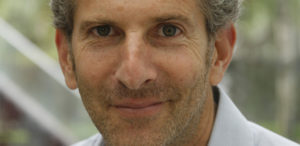Are NGOs becoming instruments of their donors?
Non-government organisations working in the humanitarian sector are increasingly becoming beholden to their donors who in many cases are exerting influence on how and where aid is delivered, according to a raft of recent reports.
Humanitarian executive and consultant Marc DuBois says donors to NGOs are now expecting strategic input as part of their buy-in.
“Money can buy the allegiance of an NGO, and it can buy aid work that responds to the strategic interests of the donor rather than the human needs on the ground. It can buy a place in the crosshairs of your donor’s enemy,” Mr DuBois said.

Marc DuBois
“We know that it can buy these things because we know that it already buys these things. It is precisely the consequences of this purchase – the frequently late, supply-sided, partisan response of international humanitarian organisations – that are fuelling a major shift in resources to local humanitarian responders.
“But if more money flows to local NGOs, will it just replicate the unhealthiest aspects of aid funding in a new way?”
The inaugural World Humanitarian Summit (WHS) produced an agenda that favours funding local response providers to facilitate rapid, flexible, multi-year funding.
And many observers agree that it is difficult to argue against the empowerment of local actors and communities to respond when crisis strikes at home.
But Mr DuBois says that a funding model that has already gutted the independence and effectiveness of international NGOs is not best-suited to empower local organisations within their own nations and communities.
“The potential of the WHS to deliver on the promise of localisation – that humanitarian aid be locally-driven and locally-owned – must be rescued from its narrow and counterproductive focus on achieving the target of 25 per cent of funding to be passed directly to local actors,” he said.
“We must engage in a more critical analysis of the strategies necessary for its achievement. Otherwise, the risk is that the post-WHS localisation will replicate too many of the very flaws that have long plagued the performance of INGO and UN agencies and hence left behind people in crisis.
“In short, will the massive shift of funding to local organisations help make aid more responsive to people’s needs, or will he who pays the piper continue to drown out that tune?” Mr DuBois said.
Another consequence of NGO’s falling in line with their donors’ wishes is that humanitarian organisations are becoming reluctant to encourage or back their leaders on the ground to take the risks necessary to make humanitarian responses more effective, according to researcher Margie Buchanan Smith.
Ms Smith has authored a study that suggests that a stifling culture of compliance and risk aversion has become the unfortunate by-product of the well-intentioned drive to improve humanitarian accountability.
“This is happening in a number of ways, mainly connected with the heavy and mechanistic approach to proposal-writing and reporting that is now required for most humanitarian funding,” Ms Smith said.
“Risk management, for example, is often reduced to a box-ticking exercise more focused on eliminating risk than on encouraging a dynamic and creative approach to risk-taking based on experience, analysis and judgement.
“Most donor funding mechanisms demand a high level of predictive accuracy on the part of the applicant, for example of the linear process that is expected to deliver the required results in the log frame, despite the unpredictability of most humanitarian crises.
“Worse still; ever-more rigorous reporting requirements demand that funding recipients stick to and report against the proposed plan, rather than be responsive, flexible and opportunistic – qualities that are key to leadership – in an environment that is dynamic and changing.
“Yet an iterative approach is much more likely to result in an appropriate response than rigid adherence to what can quickly become an outdated plan,” Ms Smith said.
Yet another report, the NGO Network ICVA Report, titled Less Paper More Aid, says donors’ overbearing requirement for compliance data from NGOs is drawing resources away from front line delivery of services.
“For example, is it the best use of resources that front-line responders, such as doctors, nurses, and other health practitioners, compile three or four sets of data to meet the requirements of different donor templates?” the report asked.
“Or that funding hinges more on the ability of organisations to comply with multiple donor conditions, rather than clearly expressed and well-informed needs analysis?.
“Such questions highlight the ways in which humanitarian principles and action may be undermined in current practice, and systems of accountability may be inadvertently be focused more on the needs of donors than affected populations,” the report said.
It says good governance is important in the humanitarian sector but there are inefficiencies and imbalances within current practice in five areas: an preponderance of risk averse procedures; a requirement for unreasonable amounts of documentation; burdensome requirements for sophisticated administrative and financial systems; duplication of reporting efforts; and, inadequate feedback.
Laurie Nowell
AMES Australia Senior Journalist












